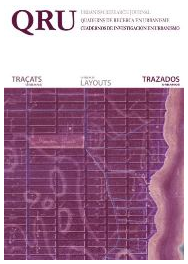La urbanística moderna: el segle dels traçats
DOI:
https://doi.org/10.5821/qru.9576Abstract
The industrialization in the end of 18th century and the beginning of 19th takes place in the cities. As they are not able to house the immigration wave in the old town premises, a new urban form will be needed. The strategies will focus in new urban layouts, of a great area, with wide modern streets, well leveled, with service infrastructure and mass transportation and great blocks with a very regular division that can host the industries and the new residential typologies. We will find three kinds of urban layouts: avenues, rings-roads and extensions. All of them have in common the use of a very regular geometric grid. Among them, the extensions are the most significant ones and the best exponent of the industrial city. These plans, based on roads layouts, are the most interesting urban projects from the last 200 years and the ones that better represent the set of paradigms of the contemporary urbanism: density, compactness, mix of uses and flexibility, and so far enjoy a great value as social and economic heritageDownloads
Issue
Section
License
Those authors who have publications with this journal, accept the following terms:
a. Authors will retain their copyright and guarantee the journal the right of first publication of their work, which will be simultaneously subject to the Creative Commons CC BY-NC-ND-4.0 recognition license that allows third parties to share the work provided that its author and its first publication are indicated in this journal, but they cannot be changed or used commercially.
b. Authors may adopt other non-exclusive license agreements for the distribution of the version of the published work (eg: deposit it in an institutional telematic archive or publish it in a monographic volume) provided that the initial publication in this journal is indicated.
c. Authors are allowed and recommended to disseminate their work through the Internet (e.g. in institutional telematic files or on their website) before and during the submission process, which can lead to interesting exchanges and increase citations. of the published work. (See The effect of open access).













